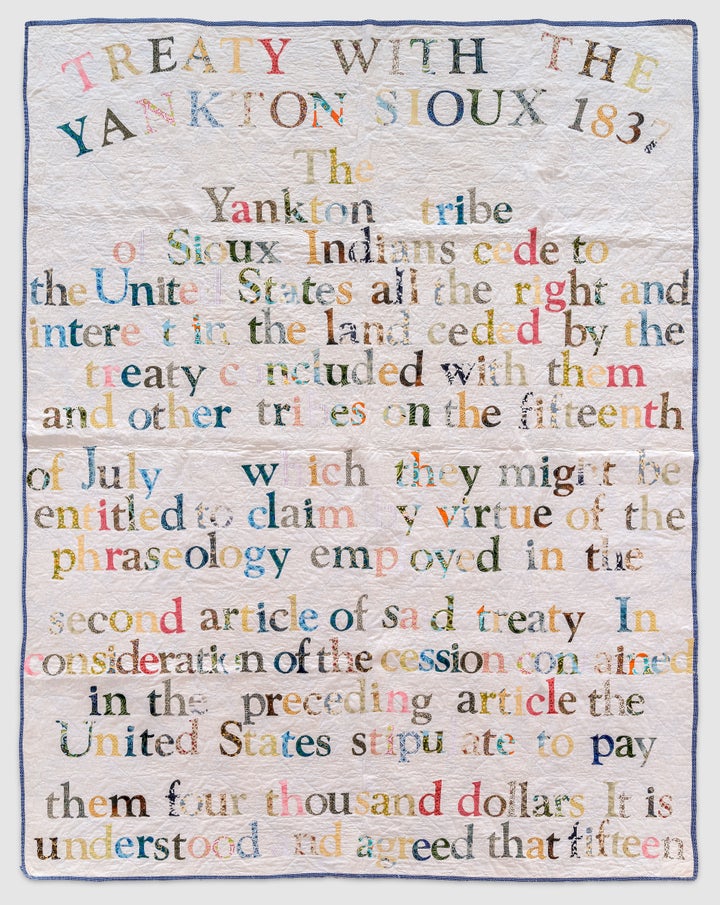
From a distance, Gina Adams’ quilts look familiar ― well-worn and stitched with intricate geometric patterns in vibrant colors, they wouldn’t look out of place draped on a couch at a rustic bed-and-breakfast. The closer one looks, however, the more unusual they look. Letters and words begin to leap out from the checkered colors, and still closer examination shows that the quilts are spelling out pieces of history.
In this project, “Its Honor Is Here Pledged,” Adams sewed the words of broken treaties between the U.S. government and Native American tribes onto quilts, creating soft blankets with sharp messages. “Sewing together injustice with an object of comfort stirs deep emotion,” wrote Adams in her statement on the works.
In an email to The Huffington Post, the artist explained that seeing native people in America use quilts for warmth was a common theme in her research of old photos in the Smithsonian Museum and archives. “Blankets were one thing that was given to the Native people who were forced to move to the new reservations,” she wrote. “It is my wish that the viewer gain an understanding that there is a relationship between the treaty text and the impact that it still has on present generations.”

To create the artworks, Adams used quilts she found in “antique stores, flea markets and gathered from dusty attics,” specifically seeking out faded, frayed and torn blankets. “I wanted to use a material that was created one hundred years ago,” she told HuffPost. “I feel the age in the quilt speaks to the language and implied weariness that still exists in the treaties.”
On top of the aging fabric, she sewed letters cut from new and old calico ― a colorful cotton fabric. The swatches were carefully chosen to work together with and across the original quilt, “creating a rhythm” viewers are drawn into. The colors of the words weren’t chosen with an eye to clarity; Adams told HuffPost that she wanted “the fabric letters to blend and fade weaving in and out of the quilts surface.”
It’s a visual strain to piece together the full text on a quilt, yet certain letters jump out, enticing one to read more closely. “The language of these treaties was meant to be confusing,” she wrote. “It’s 100 plus years later and the words still are today.”
The many broken treaties signed by the U.S. government with Native tribes have been centuries-long grievances for those tribes, but have been more recently brought to the national media spotlight by protests against the Dakota Access Pipeline by the Standing Rock Sioux. The pipeline was rerouted to tunnels under Lake Oahe, near the Standing Rock reservation, which the tribe protested, in part, as a violation of the 1851 Treaty of Fort Laramie.
“What is happening at Standing Rock is directly connected to the treaties and the protection that they give to Native American lands and water,” Adams pointed out. “In the treaties it is stated that not the United States nor any other corporation or company would ever be allowed to alter the territory stated with in them.” After taking office in January, President Donald Trump signed an executive order allowing the pipeline to move forward.
Apparent continuing violations of these treaties provide little hope for healing ― especially given the horrific treatment of the protesters, who refer to themselves as “water protectors,” encamped at Standing Rock. But Adams’ quilts are their own bid for recognition and healing, and she told HuffPost that they sprang from “the hope that change could occur.”
That change would start, she said, with an apology, one given “out loud and directly from all United States Government... This apology would begin the process of healing for Native people of the United States who carry inherited trauma and pain... With these apologies, it would be possible that a great healing would begin.” That healing, she added, would only be the first step: “Once the healing begins, then the work of going back to the language of the original documents and taking accountability for all of the articles and promises that were given should happen.”
“My hope was that present people would reconsider the need to reinvestigate the treaties,” she wrote. “Viewers come into the installed gallery space expecting to just see art quilts… they don’t expect the emotions they feel from the language that exists with the space. The beauty is that art does have the power to create ripples of change. If we don’t as a collective people start with small ripples the larger ones may never happen.”
View some of Adams’s quilts below, and check out her work on her website.
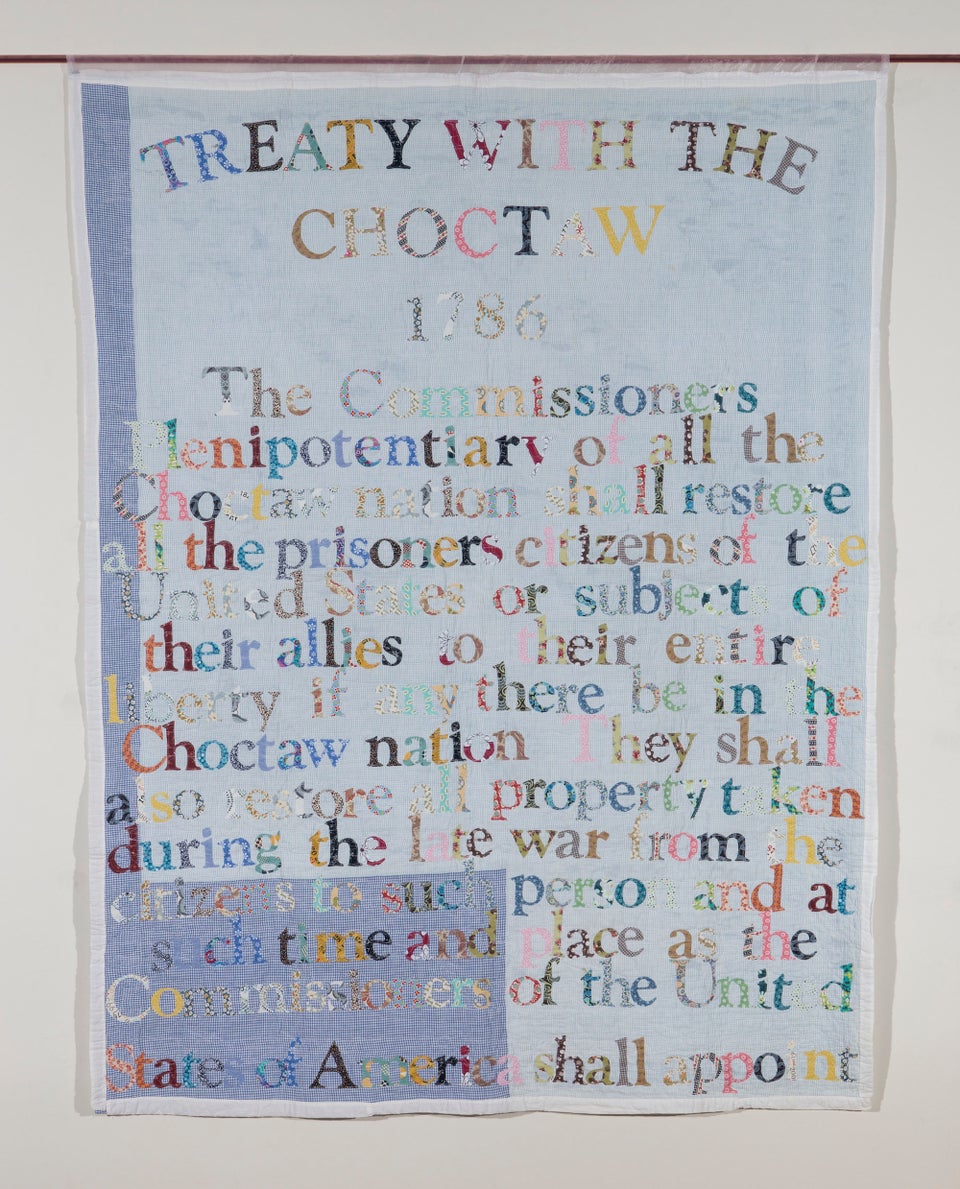





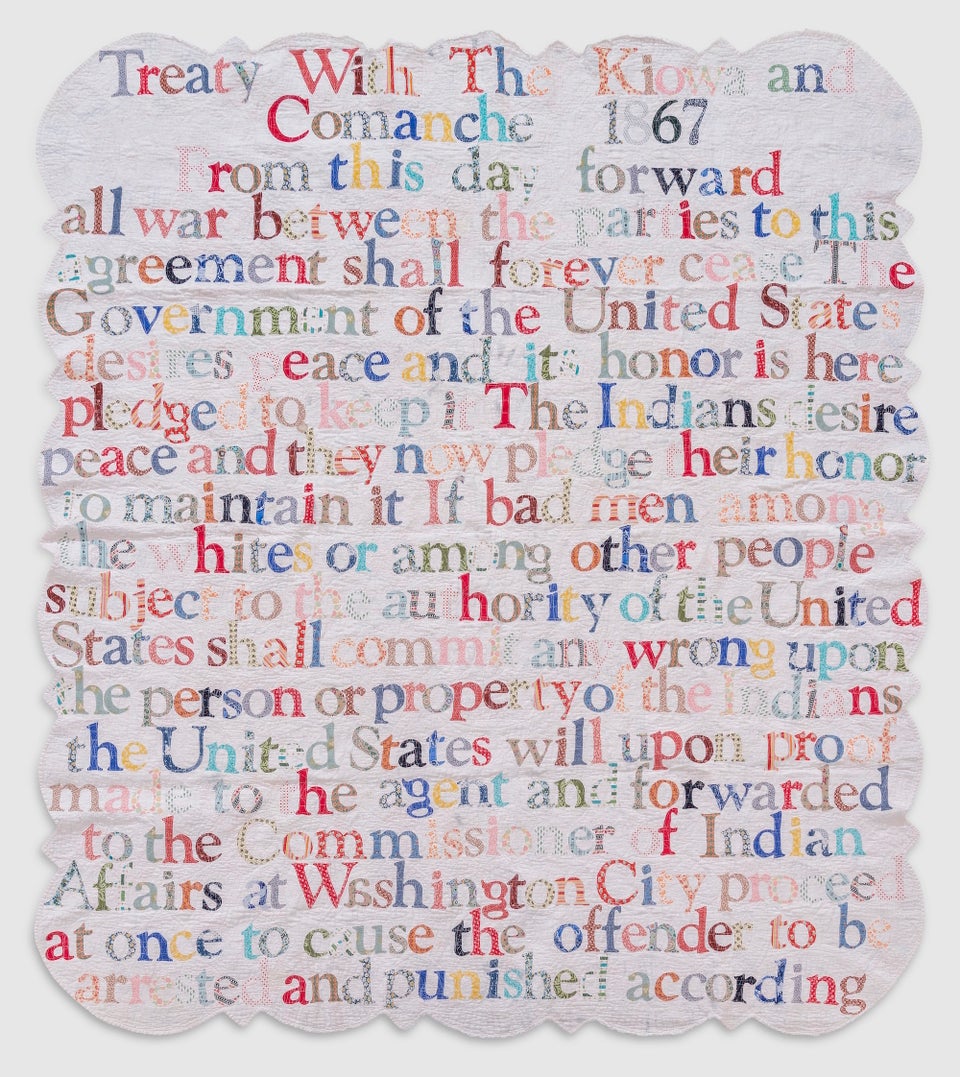

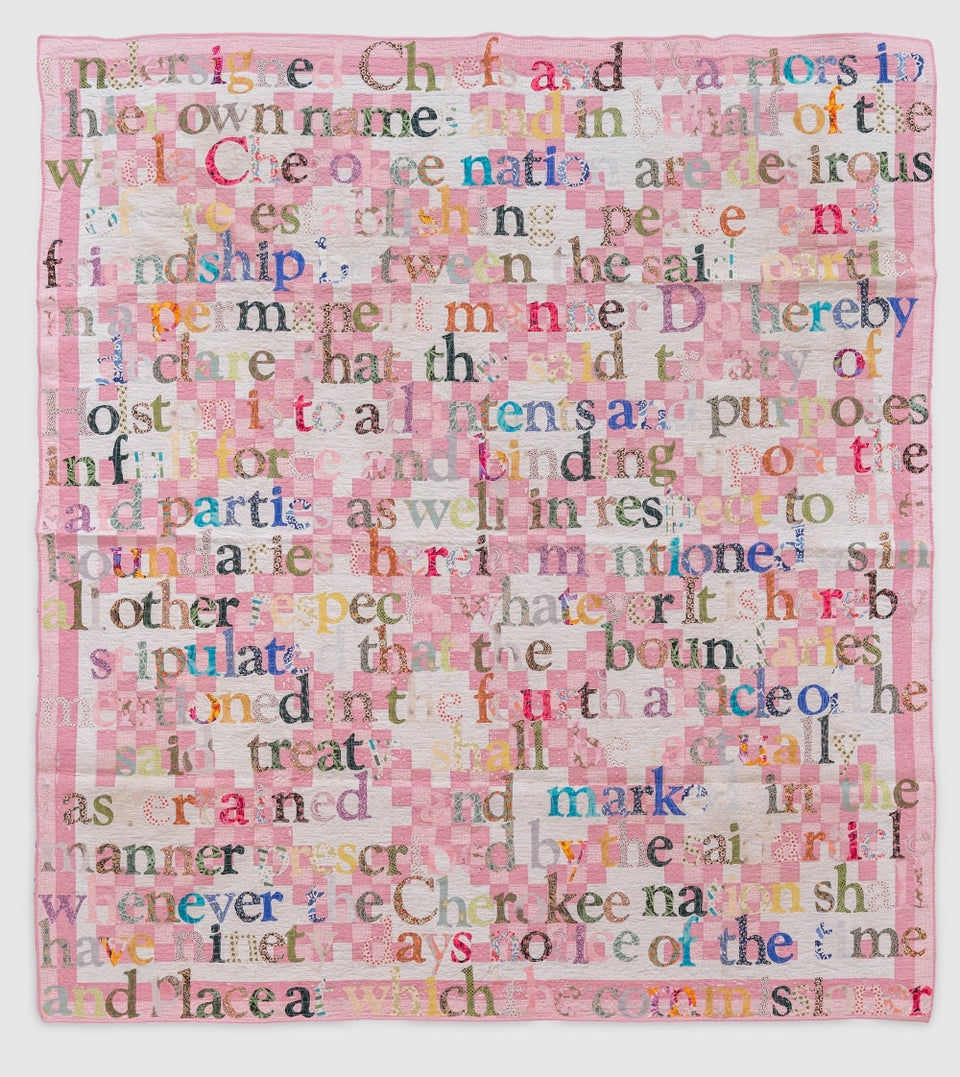
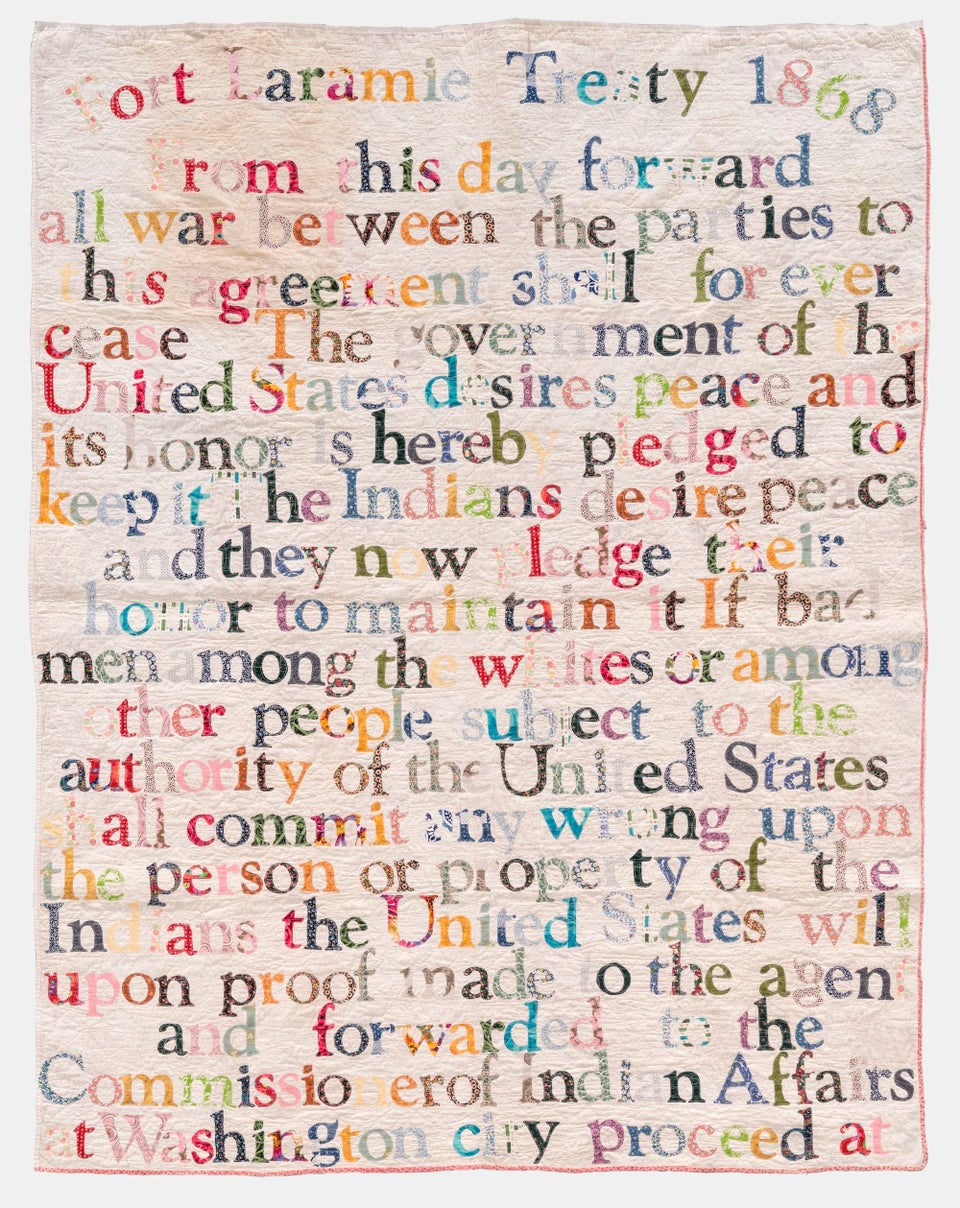
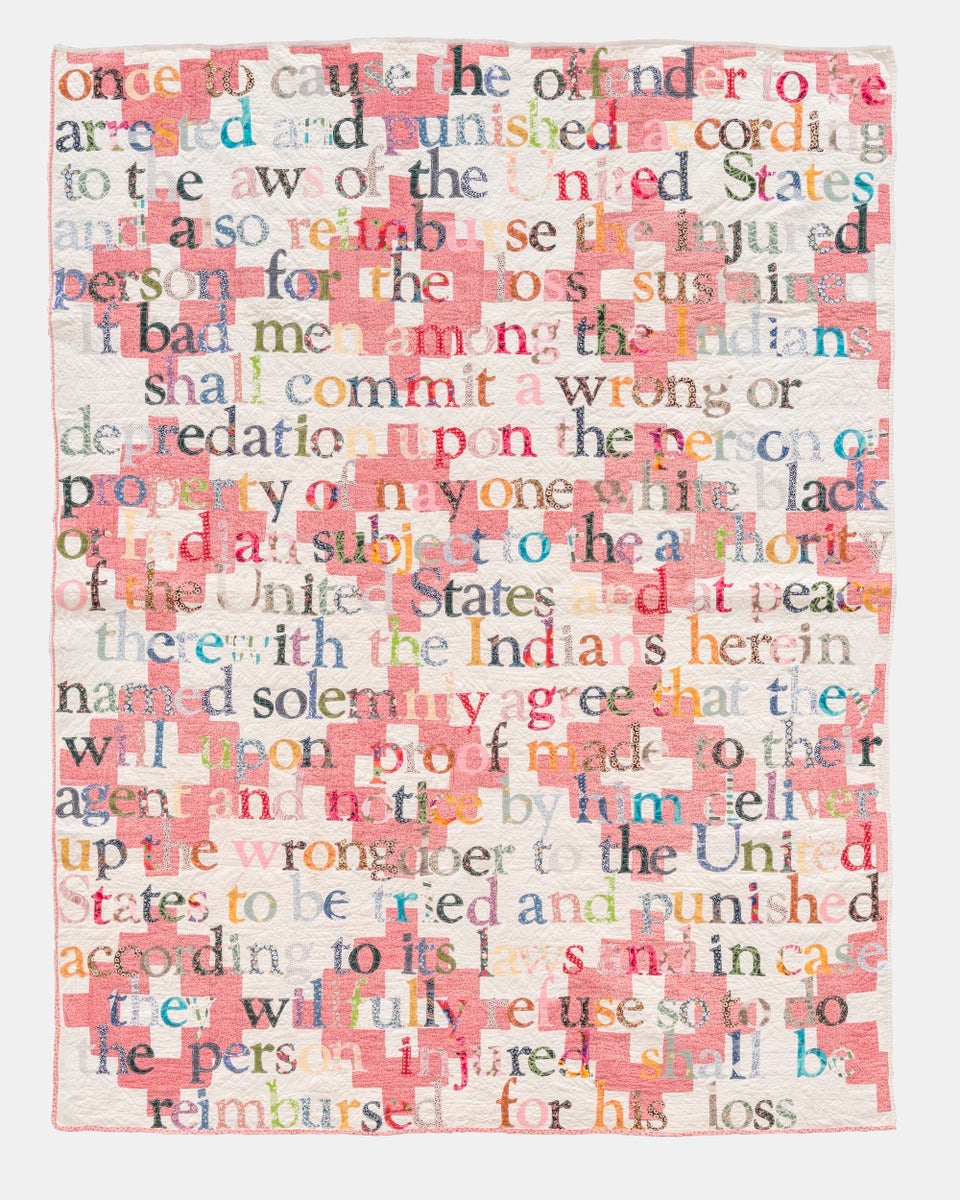
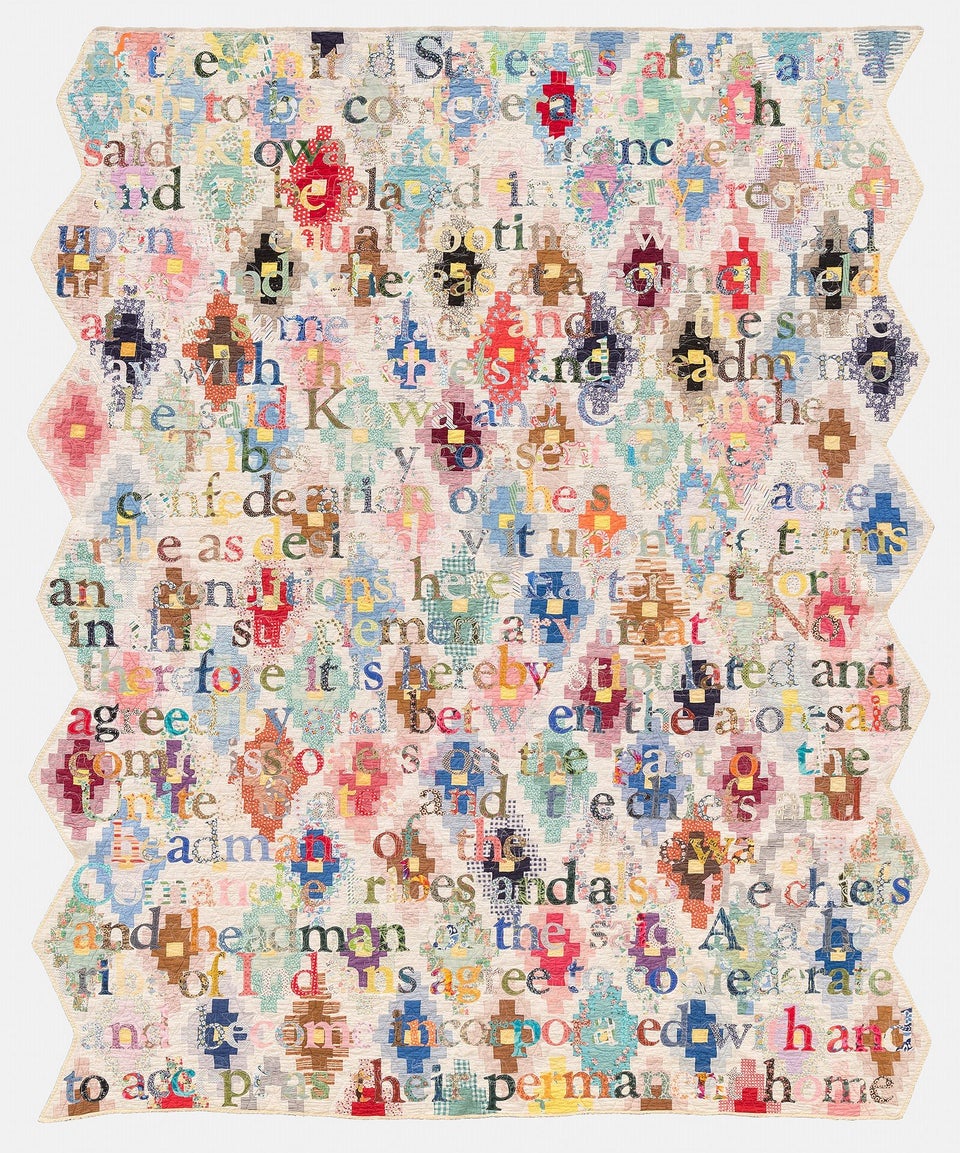
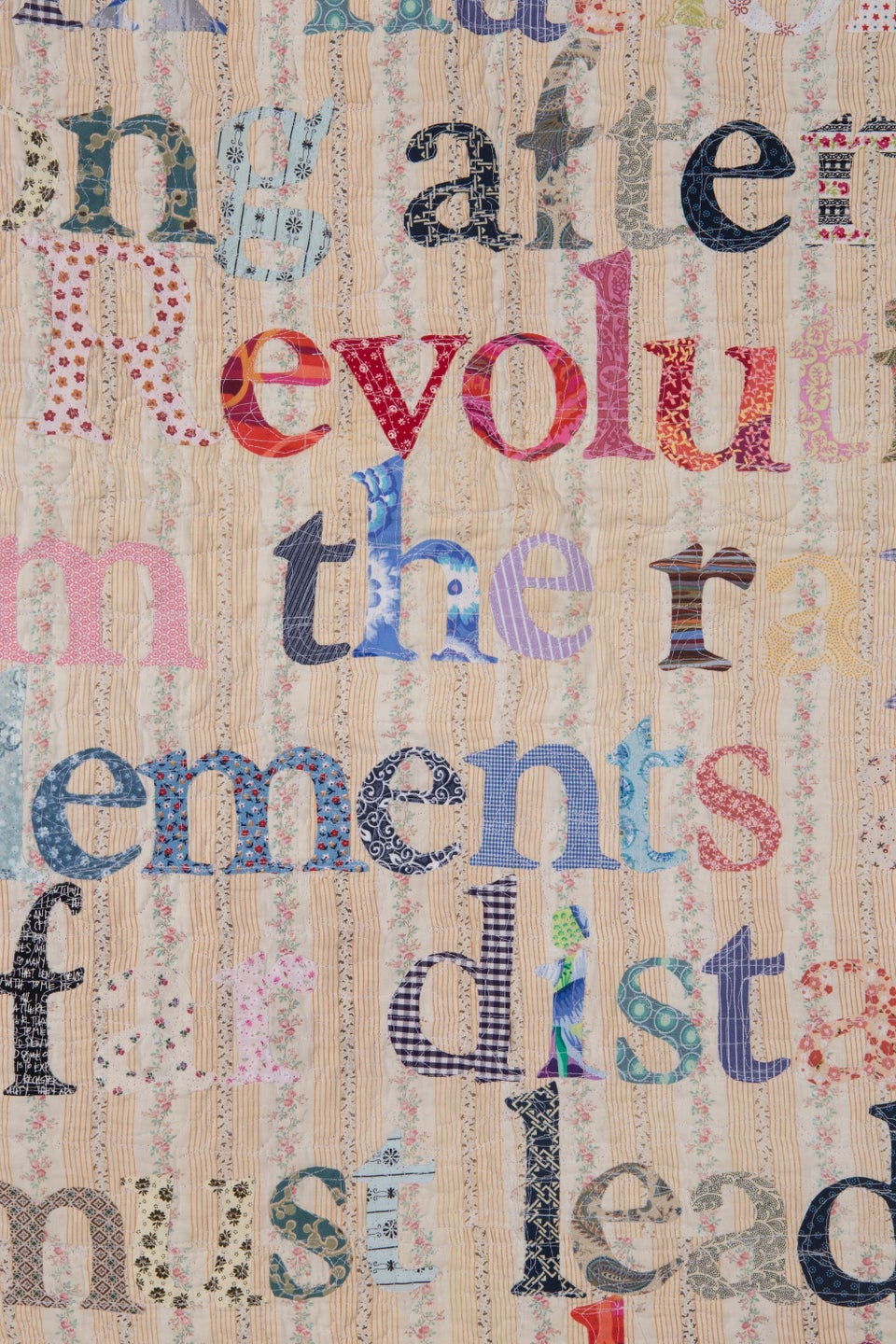
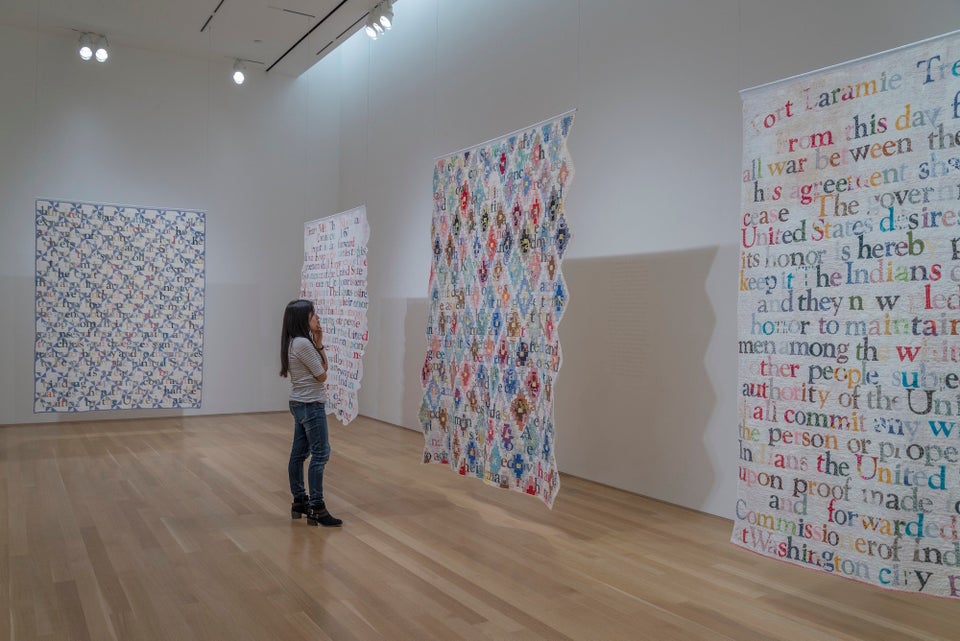


H/T Hyperallergic
